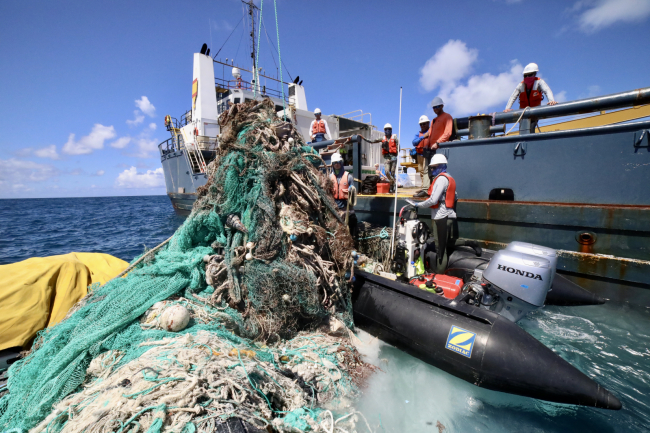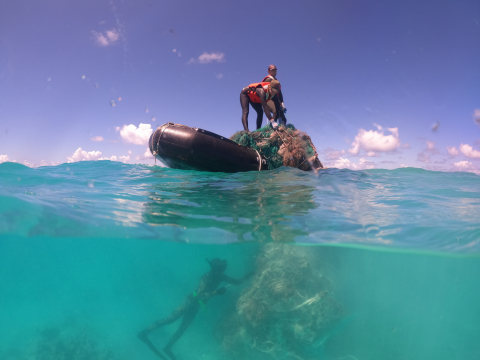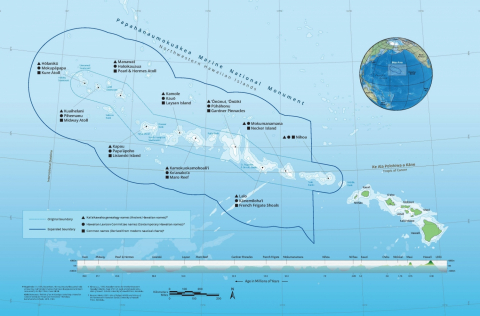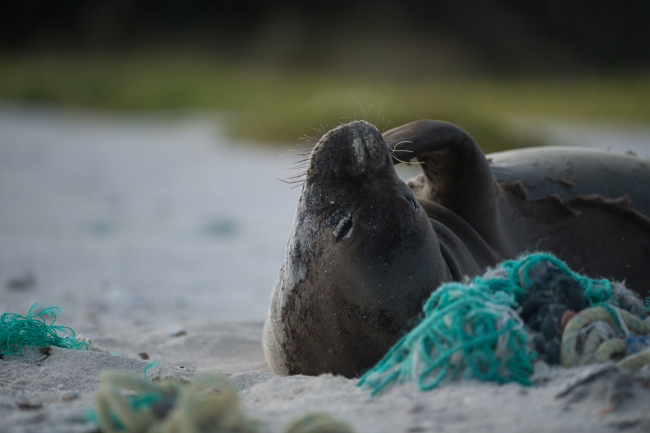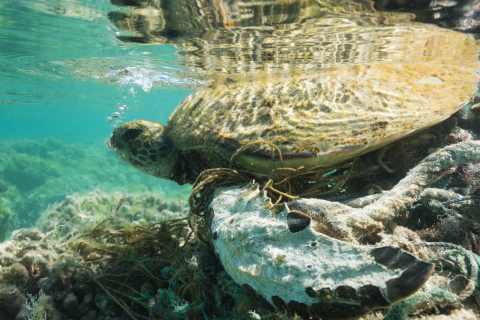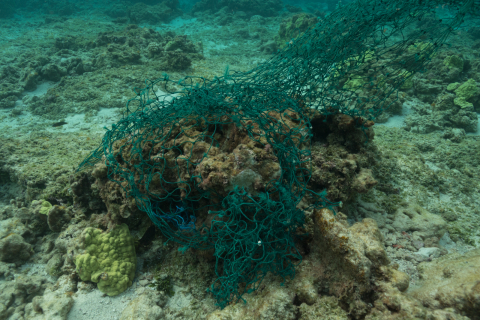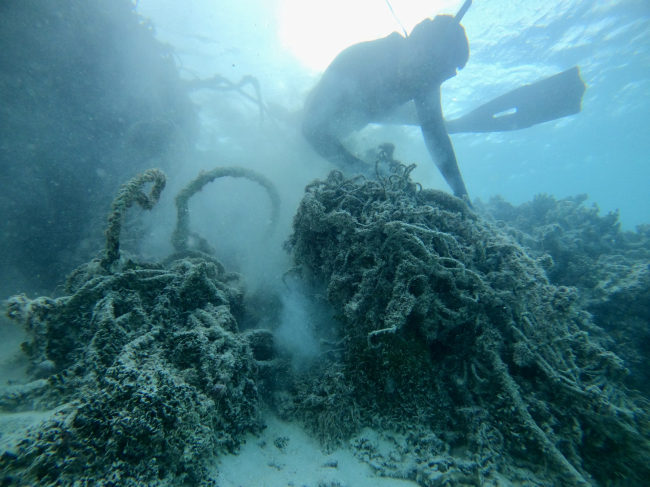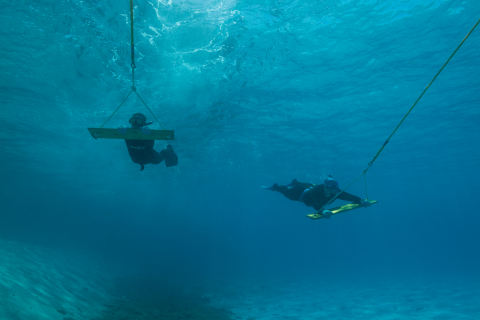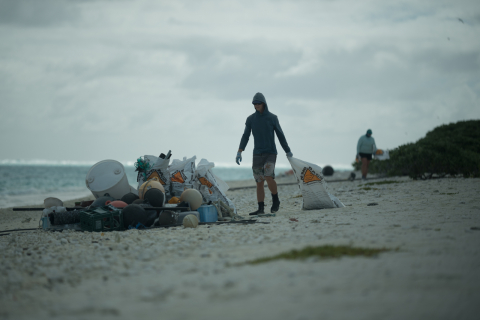The delicate and extraordinary environment of the Papahānaumokuākea Marine National Monument (monument) receives an estimated 52 metric tons of derelict fishing gear every year from commercial fisheries all over the Pacific. Derelict fishing gear refers to nets, lines, pots, traps, and other fishing equipment that has been lost, abandoned, or discarded in the marine environment. Most modern fishing gear is made of long-lasting and/or synthetic materials, such as plastic and metal, that can remain in the environment for many years. Derelict fishing nets, ranging in size from a basketball to a small car, can pose incredible threats years after they are lost and are of particular concern in the monument given its delicate and significant environment.
The monument is home to more than 7,000 marine species, many of which are endemic (found nowhere else in the world). It is also home to 23 species that are listed under the U.S. Endangered Species Act, including the threatened Hawaiian green sea turtle, endangered Hawaiian monk seal, and the critically endangered Laysan duck. Derelict fishing nets are a constant entanglement threat for marine wildlife, making it difficult for trapped animals to swim and feed. Derelict fishing nets can also ghost fish, or continue to trap and kill, for years after they are lost, but that isn’t the only danger they pose. Many of these nets can also become trapped on the extensive reefs of the monument. The monument’s reefs themselves are also at risk from abrasion and scouring as the heavy nets glide through the currents and snag on vibrant corals, in some cases coming to rest on top of the reef structure. These heavy nets can also smother coral causing damage to the coral itself and marine life that rely on it, ultimately impacting the greater coral reef ecosystem.
Derelict nets and ghost fishing are a haunting problem in the monument. These critical threats have been persistent over the years, and their removal is an important part of protecting and preserving the unique native ecosystem of Papahānaumokuākea. The NOAA Marine Debris Program is proud to support the NOAA Pacific Islands Fisheries Science Center’s (PIFSC) Marine Debris Project team as they currently lead a 30-day mission in the monument with support from the nonprofit Papahānaumokuākea Marine Debris Project (PMDP). The team is specifically aiming to remove 115,000 pounds of derelict fishing gear and plastic debris from the shallow coral reef and shoreline environments of the monument. This team of specialized divers will be towed underwater behind small boats to survey the vast reef area and free-dive to carefully cut and remove derelict nets from reefs. Additionally, the team will walk the shorelines of these islands and atolls and remove entanglement hazards, ultimately reducing entanglement and ghost fishing hazards in the monument.
The 30-day effort will wrap up on September 22 when the team docks in Honolulu, Hawai‘i. We look forward to sharing the results of the mission with you on our blog, including the amount of derelict nets removed. In the meantime, you can follow the NOAA Pacific Islands Fisheries Science Center’s Twitter and Facebook accounts for pictures and progress updates throughout the remainder of the mission.
* It is important to use the ancient, contemporary, and common names of the islands to acknowledge the historical and cultural significance of Papahānaumokuākea Marine National Monument. Learn more about the ancient and contemporary Hawaiian names here.

